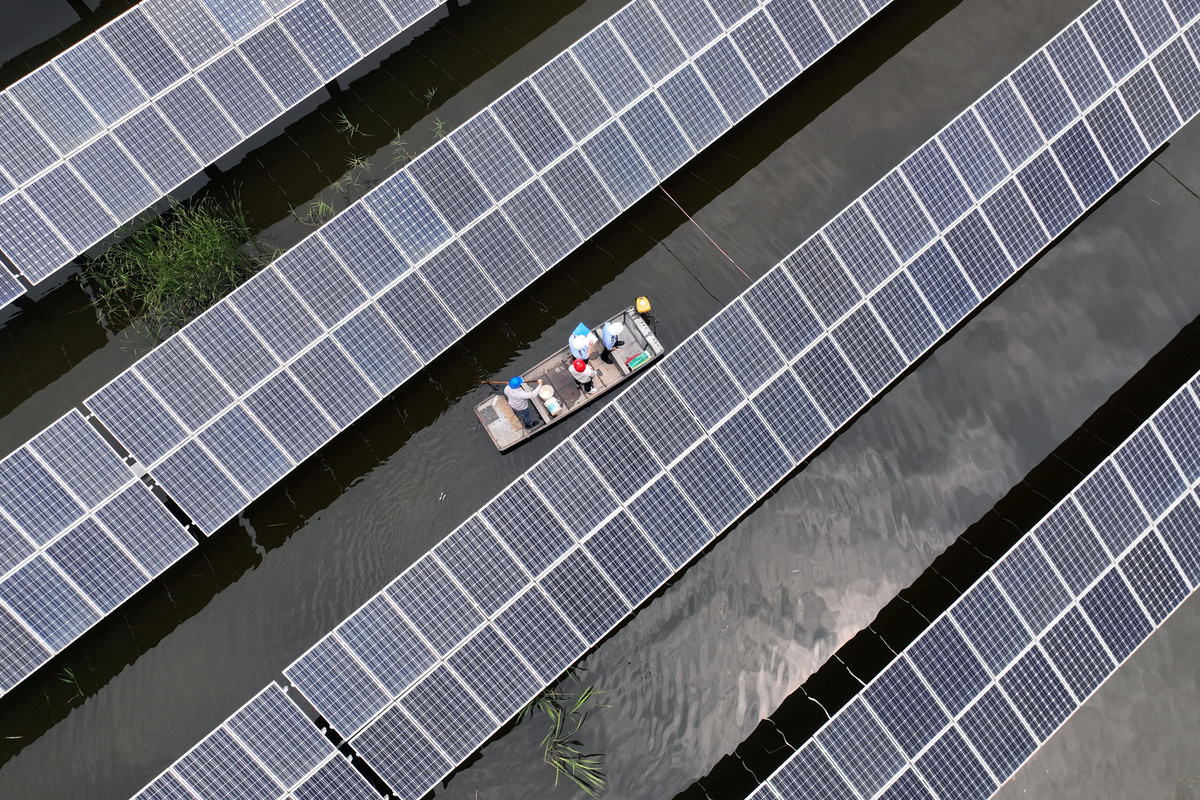
Police officers and electricians inspect a lake-based photovoltaic power station in Baoying county, Jiangsu province, in June. The county has integrated fishing with the PV industry in its green energy transition. [PHOTO by SHEN DONGBING/FOR CHINA DAILY]
Solar energy will be a game-changer in China's rural regions, offering a reliable and affordable answer to local energy demands while facilitating the green energy transition nationwide, according to national legislators, political advisers and industry experts.
Solar energy, with no fuel costs and low maintenance costs, has been developing rapidly in China's rural regions over the past few years, and has created savings in rural communities by replacing expensive and inefficient traditional fuels, said Zhong Baoshen, chairman of Longi Green Energy Technology Co.
It has the potential to revolutionize the energy landscape in China's rural regions, enabling millions of people to access clean and sustainable power, and be the driver toward a net-zero world, said Zhong, who is also a deputy to the 14th National People's Congress.
However, despite its rapid expansion, the sector is marred by various irregularities, including inconsistent component quality and inadequate corrosion prevention measures in crucial elements, as well as a lack of proper infrastructure such as grid connectivity and transmission lines to distribute solar energy effectively, he said.
The varying quality of photovoltaic components, coupled with a lack of maintenance and management of solar products in rural regions, pose risks to the overall construction quality of solar power stations in rural areas, leading to operational challenges and potential safety hazards, said Zhong.
He called for comprehensive policies at the national level to address the current regulatory gaps and ensure the long-term sustainability and reliability of the rural photovoltaic sector.
The absence of a dedicated operational and maintenance framework tailored specifically for rural photovoltaic installations makes it difficult to make better use of solar power, and it is urgent for the country to formulate comprehensive policies that address this gap, ensuring the development of high-quality standards for the construction and implementation of rural photovoltaic projects, he said.
According to a guideline underpinning green development in urban and rural areas released by the State Council, by 2035 green development will cover urban and rural areas in a comprehensive way, with an increased cut in carbon emissions.
China's rural areas, encompassing over 90 percent of the nation's total land area, hold immense potential for the development of rural photovoltaics. In the new era, photovoltaics will not only empower the vitalization of rural industries and contribute to shared prosperity, but also provide a robust driving force for green, low-carbon development and the construction of beautiful rural landscapes, said Zhong.
Source: By Zheng Xin, chinadaily.com, Mar. 11, 2024 [https://www.chinadaily.com.cn/a/202403/11/WS65ee3d9da31082fc043bbbb3.html]

